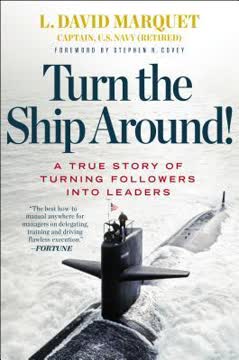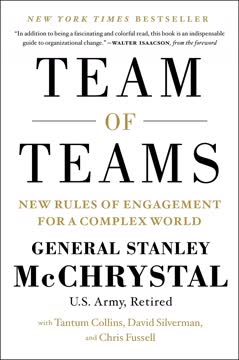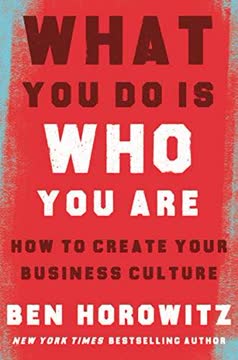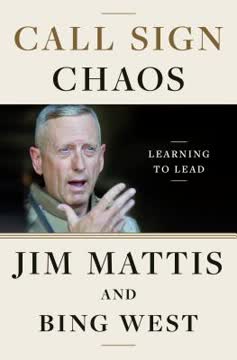重点摘要
1. 去中心化组织正在重塑行业和社会
去中心化已经沉睡了数千年。但互联网的出现释放了这一力量,打破了传统企业,改变了整个行业,影响了我们彼此之间的关系,并影响了世界政治。
去中心化革命。 去中心化组织的兴起正在改变各个领域,从音乐和软件到社会运动和恐怖主义。例子包括:
- Napster和点对点网络颠覆音乐产业
- 维基百科挑战传统百科全书
- Craigslist颠覆分类广告
- 基地组织对国家安全提出新挑战
对传统结构的影响。 去中心化系统通常比其中心化对手更具弹性、适应性和难以控制。这一转变迫使现有机构重新思考其战略,并适应一个权力分散而非集中的新环境。
2. 海星类比:理解去中心化系统
如果你切掉一只手臂,大多数这些动物会长出一只新手臂。而对于某些品种,如长臂海星,动物可以从一小块手臂中复制自己。
海星与蜘蛛组织。 书中引入了一个强有力的类比来区分中心化和去中心化系统:
- 蜘蛛(中心化):有一个头,层级结构,如果头被移除则脆弱
- 海星(去中心化):没有中央大脑,分布式网络,可以从部分再生
海星组织的关键特征:
- 没有明确的领导者或层级
- 知识和权力分布在整个系统中
- 对攻击或关闭尝试具有弹性
- 能够迅速变异和适应
3. 催化剂:去中心化运动背后的隐藏力量
催化剂是启动一个圈子然后淡出背景的人。
催化剂的角色。 催化剂对去中心化组织至关重要,但他们的领导风格与传统CEO有显著不同:
- 激励和连接人们而不是发号施令
- 将所有权和责任转移给圈子
- 通过榜样和理念而非权威领导
- 通常在幕后或在启动运动后淡出
催化剂工具:
- 对他人有真正的兴趣
- 能够绘制社交网络
- 渴望帮助和连接人们
- 情商
- 对网络的信任
- 对模糊性的容忍
4. 成功的去中心化组织的五个关键要素
《海星与蜘蛛》代表了理解和掌握分布式领导的重要框架。
去中心化的五条腿:
- 圈子:形成基本单位的小型自治团体
- 催化剂:启动和激励但不控制
- 理念:将组织凝聚在一起的共同信念
- 预先存在的网络:组织可以在其上成长的平台
- 冠军:不懈地推广和实施想法
平衡的重要性。 成功的去中心化组织需要五个要素共同发挥作用。失去一两个腿可能不会摧毁组织,但拥有所有五个要素会创造一个强大而有弹性的系统。
5. 理念和预先存在的网络推动去中心化增长
理念是将去中心化组织凝聚在一起的粘合剂。
共同信念的力量。 强大的理念提供:
- 成员在没有传统激励的情况下贡献的动力
- 团结多样化个人和团体的共同目标
- 面对挑战或攻击的弹性
利用现有平台。 去中心化运动通常通过利用以下资源迅速增长:
- 具有共同价值观的既定社区(例如,废奴运动中的贵格会)
- 使连接和协作变得容易的技术(例如,点对点网络的互联网)
理念驱动的例子:
- AA:相信互助克服成瘾
- 维基百科:信仰协作知识创造
- 开源软件:致力于免费和可访问的技术
6. 混合组织:平衡中心化和去中心化
像eBay这样的公司结合了两者的优点——去中心化的自下而上的方法和中心化的结构、控制以及由此产生的利润潜力。
混合组织的类型:
- 中心化公司,去中心化的客户体验(例如,eBay,亚马逊)
- 中心化公司,去中心化的内部业务部分(例如,杰克·韦尔奇领导下的GE)
混合方法的好处:
- 利用去中心化的创造力和适应性
- 保持中心化的结构和问责制
- 在快速变化的行业中更具竞争力
成功的混合例子:
- eBay:中心化公司结构,去中心化的用户评级和交易
- 谷歌:中心化运营,算法依赖去中心化的用户输入
- 丰田:层级结构,赋权的自治工作团队
7. 在组织结构中找到“甜蜜点”
去中心化的甜蜜点是中心化-去中心化连续体上提供最佳竞争位置的点。
平衡艺术。 组织必须在中心化和去中心化之间找到正确的平衡,以最大化效能和竞争力。
影响甜蜜点的因素:
- 行业特征
- 技术变化
- 客户偏好
- 监管环境
- 竞争格局
动态性质。 甜蜜点不是静态的;它可以随着内部和外部因素的变化而变化。成功的组织不断重新评估并调整其在中心化-去中心化光谱上的位置。
8. 对抗去中心化对手的策略
当受到攻击时,去中心化组织往往变得更加开放和去中心化。
对抗海星的挑战。 传统战术在对抗去中心化对手时往往适得其反,使其更强大和更有弹性。
有效策略:
- 改变理念:解决根本原因并转变信念(例如,贫民窟中的小额信贷)
- 中心化他们:引入层级或稀缺资源(例如,给阿帕奇领导人提供牛)
- 自己去中心化:用海星对抗海星(例如,创建去中心化的反恐单位)
适应的重要性。 面对去中心化挑战者的组织必须愿意重新思考其方法,并可能采用混合或去中心化元素。
9. 去中心化世界中的新商业规则
我们已经进入了一个小型化可以提供基本经济优势的新世界。
范式转变:
- 规模不经济:在网络环境中,小型化可能更好
- 网络效应:随着更多人使用产品或服务,价值增加
- 人民力量:客户和用户成为共同创造者和合作者
- 快速适应:成功取决于快速演变和响应变化的能力
对领导者的影响:
- 拥抱模糊性和分布式决策
- 专注于促进而不是控制
- 培养强大的理念和共同目标
- 利用预先存在的网络和平台
- 不断寻找中心化和去中心化之间的“甜蜜点”
最后更新日期:
FAQ
What's "The Starfish and the Spider" about?
- Decentralization vs. Centralization: The book explores the power and dynamics of decentralized (starfish) versus centralized (spider) organizations.
- Real-world Examples: It uses examples like Alcoholics Anonymous, Wikipedia, and al Qaeda to illustrate how leaderless organizations operate.
- Organizational Structure: The authors discuss how decentralized organizations can be more resilient and adaptable than traditional hierarchical structures.
- Impact on Industries: The book examines how decentralization is affecting various industries, including music, software, and telecommunications.
Why should I read "The Starfish and the Spider"?
- Understanding Modern Organizations: It provides insights into how modern organizations are evolving with decentralization.
- Strategic Insights: Offers strategies for businesses to adapt to or combat decentralized competitors.
- Innovative Thinking: Encourages readers to think differently about leadership and organizational structure.
- Relevance: The concepts are applicable to a wide range of fields, from business to social movements.
What are the key takeaways of "The Starfish and the Spider"?
- Decentralization's Strengths: Decentralized organizations are resilient, adaptable, and can grow rapidly.
- Catalysts' Role: Catalysts are crucial in starting and maintaining decentralized organizations but must eventually step back.
- Ideology's Importance: A strong, shared ideology is the glue that holds decentralized organizations together.
- Hybrid Models: Combining elements of both centralized and decentralized structures can be highly effective.
How do "starfish" and "spider" organizations differ according to the authors?
- Structure: Starfish organizations lack a central command, while spider organizations have a clear hierarchy.
- Resilience: Starfish organizations can survive the loss of a leader or unit, whereas spider organizations are vulnerable if their head is removed.
- Growth: Starfish organizations can grow rapidly and mutate easily, while spider organizations grow more slowly and are less flexible.
- Decision-Making: In starfish organizations, decisions are made collectively, whereas in spider organizations, decisions are top-down.
What is the role of a catalyst in a decentralized organization?
- Initiator: Catalysts start the organization by inspiring and connecting people.
- Non-controlling: They lead by example and do not impose control over the organization.
- Facilitator: Catalysts help establish the initial structure and culture but then step back to let the organization evolve.
- Trust Builder: They foster a culture of trust and collaboration among members.
How does "The Starfish and the Spider" explain the concept of the "sweet spot"?
- Balance: The sweet spot is the optimal balance between centralization and decentralization for an organization.
- Adaptability: Organizations must continually adapt to find and maintain this balance as external conditions change.
- Examples: Companies like eBay and Toyota are cited as examples of finding the sweet spot by combining decentralized user input with centralized control.
- Dynamic Nature: The sweet spot is not static; it shifts with technological and market changes.
What strategies does "The Starfish and the Spider" suggest for combating decentralized organizations?
- Change Ideology: Altering the ideology of a decentralized organization can weaken its cohesion.
- Centralize Them: Introducing property rights or centralized resources can shift a decentralized organization toward centralization.
- Join Them: Adopting a hybrid model that incorporates decentralized elements can be an effective strategy.
- Empower Local Knowledge: Utilize local knowledge and networks to counteract decentralized threats.
What are some real-world examples used in "The Starfish and the Spider"?
- Alcoholics Anonymous: Demonstrates the power of decentralized support groups.
- Wikipedia: Illustrates how user-generated content can create a comprehensive and reliable resource.
- al Qaeda: Used to show how decentralized cells can operate effectively without a central command.
- eBay: An example of a hybrid organization that combines decentralized user ratings with centralized operations.
What are the best quotes from "The Starfish and the Spider" and what do they mean?
- "The harder you fight a decentralized opponent, the stronger it gets." This highlights the resilience of decentralized organizations when under attack.
- "A leader is best when people barely know that he exists." Emphasizes the role of catalysts who lead by empowering others rather than through direct control.
- "The values are the organization." Stresses the importance of a shared ideology in maintaining the cohesion of a decentralized group.
- "Put people into an open system and they’ll automatically want to contribute." Reflects the natural human desire to share and collaborate in decentralized environments.
How does "The Starfish and the Spider" address the impact of decentralization on industries?
- Music Industry: Shows how P2P networks have disrupted traditional music distribution.
- Software Industry: Discusses the rise of open-source software as a decentralized alternative to proprietary systems.
- Telecommunications: Explains how services like Skype have challenged traditional phone companies.
- Newspaper Industry: Describes how platforms like craigslist have affected classified ad revenues.
What is the significance of the "accordion principle" in "The Starfish and the Spider"?
- Cyclical Nature: Industries and organizations tend to swing between centralization and decentralization over time.
- Response to Overcentralization: Decentralized systems often emerge as a response to overly centralized structures.
- Adaptation: Organizations must adapt to these shifts to remain competitive and relevant.
- Historical Context: The principle is illustrated through historical examples, such as the evolution of the music industry.
How can businesses apply the concepts from "The Starfish and the Spider"?
- Embrace Decentralization: Incorporate decentralized elements to foster innovation and adaptability.
- Leverage Networks: Utilize the network effect to enhance value and customer engagement.
- Balance Control and Freedom: Find the sweet spot between centralized control and decentralized freedom.
- Focus on Ideology: Cultivate a strong, shared ideology to unite and motivate employees and customers.
评论
《海星与蜘蛛》探讨了去中心化组织相较于传统层级结构的力量和韧性。读者们认为这本书发人深省,书中充满了引人入胜的例子,并提供了关于领导力和组织结构的宝贵见解。一些人称赞其具有改变企业的潜力,而另一些人则觉得书中内容深度不足或依赖于过时的例子。书中通俗易懂的风格和对人类主动性的重视引起了许多人的共鸣,尽管有些人希望能有更多实际操作的建议。总体而言,读者们欣赏这本书对组织动态和在变化市场中适应性的全新视角。
Similar Books















